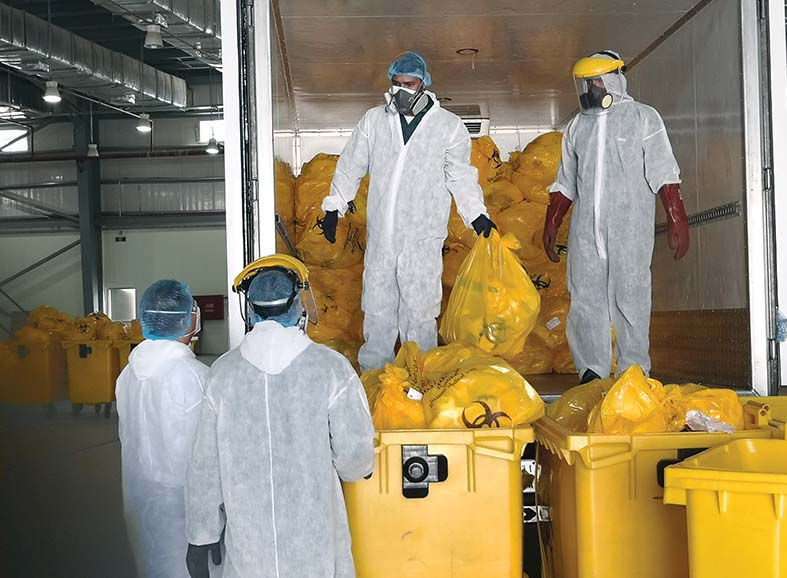How Hospitals Safely Handle Biomedical Waste
- Dr. Sanjay Joshi

- Aug 15
- 2 min read
Biomedical waste handling is now hi-tech, with the MPCB pioneering real-time tracking of over 140 GPS-fitted trucks across the state from its control centre.

In my previous article, we discussed how hospitals must segregate waste according to the prescribed colour-coding system to ensure safe disposal. Building on that, the next step is its transportation to a common treatment facility for further processing and final safe disposal. Before this can take place, the waste must be stored temporarily within the hospital. Hospitals generally have a designated central waste-collection room located within their premises. This room should be away from public or visitor access.
A water supply should be available adjacent to the central waste-storage area to allow for cleaning and washing of the room and its containers. Drainage from the storage and washing area must be directed to the Effluent Treatment Plant. Signage displaying relevant details—such as the emergency contact number, the name of the person in charge, and a biohazard logo—should be clearly posted. No general waste should be stored in this room, and access must be restricted to authorised personnel only.
Biomedical waste generated in wards, laboratories, operating theatres, and other areas should be transported to the central storage room in covered trolleys or carts. These should travel along a route isolated from public areas. This ensures that patients and visitors are not exposed to the waste. The trolleys or carts should be dedicated solely to biomedical waste collection. Patient trolleys must not be used.
The operator of a common facility for the treatment of waste is responsible for transporting the waste collected in the hospital’s central storage. The most commonly used vehicles are four-wheeler tempo trucks. These must be modified according to specifications from the state pollution control boards under the Motor Vehicle Act of 1988. The vehicles must be covered, have proper labelling, and display biohazard logos on all sides to show that infectious biomedical waste is being transported. Sometimes, the vehicle may need refrigeration if the ambient temperature is high, and the waste has to travel a long distance. The Bio-Medical Waste (Management and Handling) Rules (BMW Rules) mandate the use of GPS for tracking vehicles transporting biomedical waste. A tracking system has multiple benefits, such as:
Monitoring and control: GPS allows authorities to monitor vehicle movements in real-time and calculate the number of trips made by vehicles from the pickup source to the common facility.
Accountability and transparency: GPS tracking provides a record of vehicle routes and disposal locations, increasing accountability and transparency in the waste management process.
Preventing environmental and health hazards: By ensuring proper waste disposal, GPS tracking helps mitigate the risks of environmental contamination and public health issues associated with improper biomedical waste management.
The Maharashtra Pollution Control Board (MPCB) was among the first to implement this. It is monitoring the movements of more than 140 trucks online from a control centre through such GPS devices.
Now, what happens to the waste after it reaches the common facility? Please hold on until next Saturday.
Until then, have a good weekend!
(The writer is an environmentalist.)




Comments